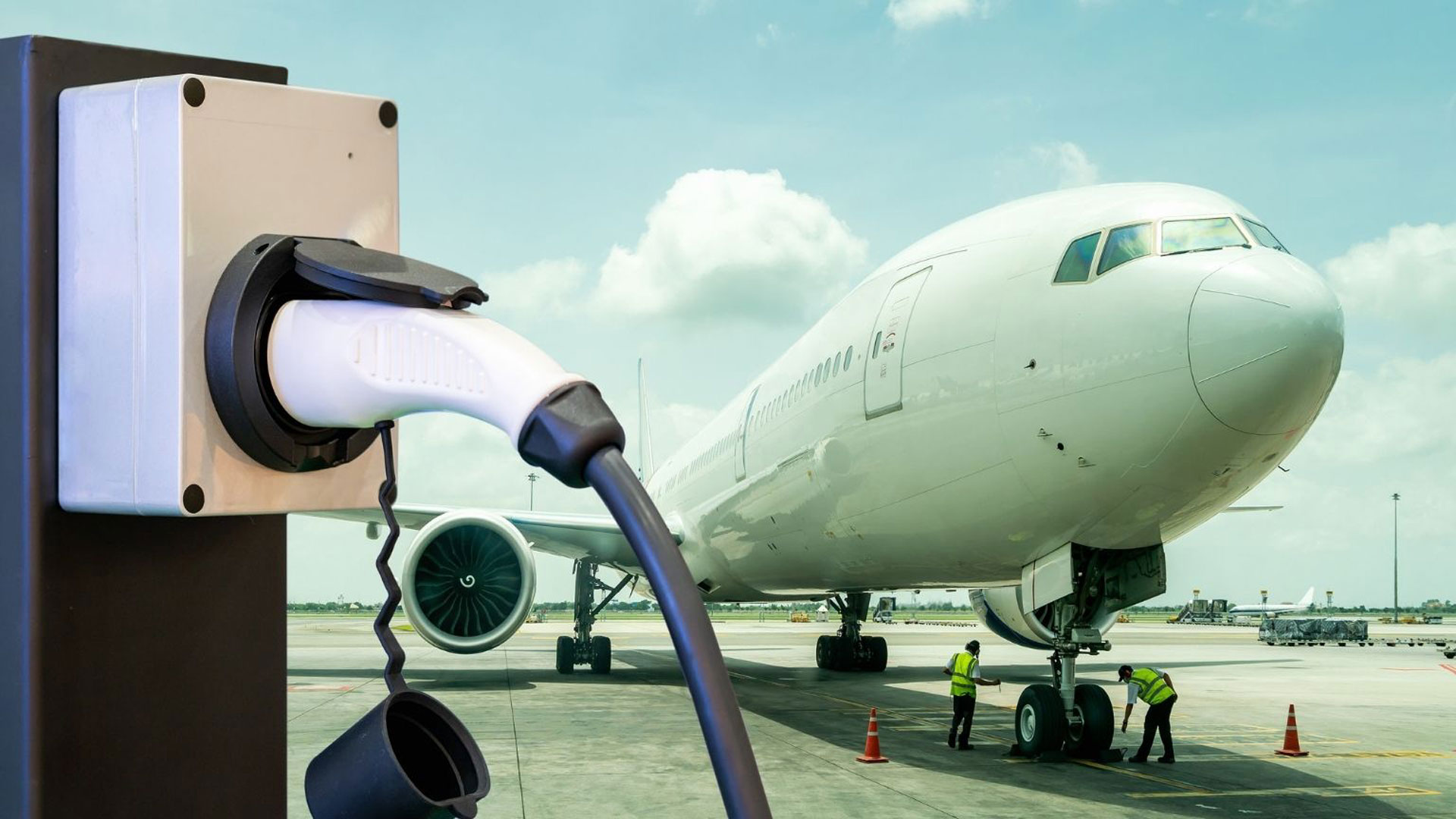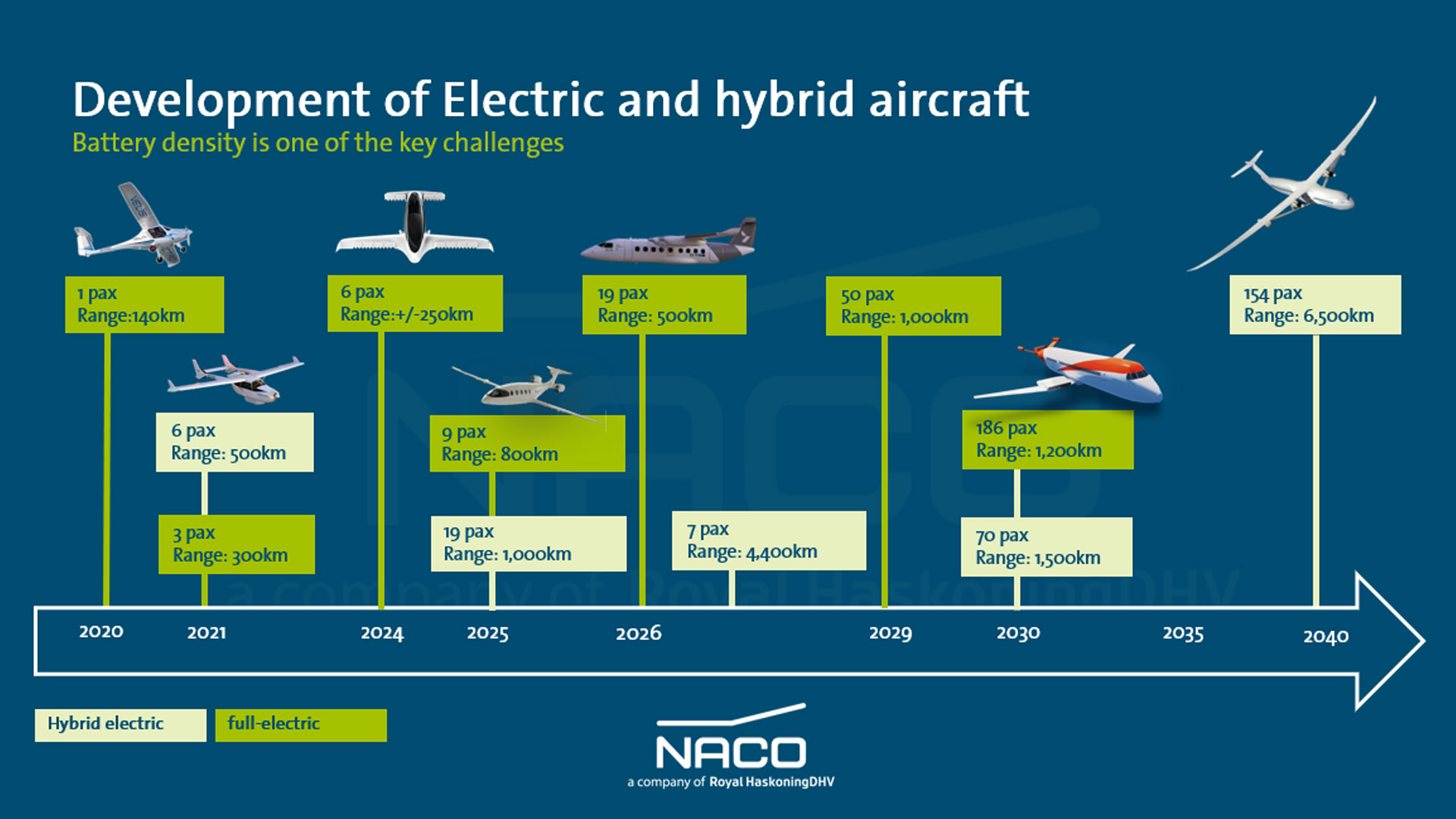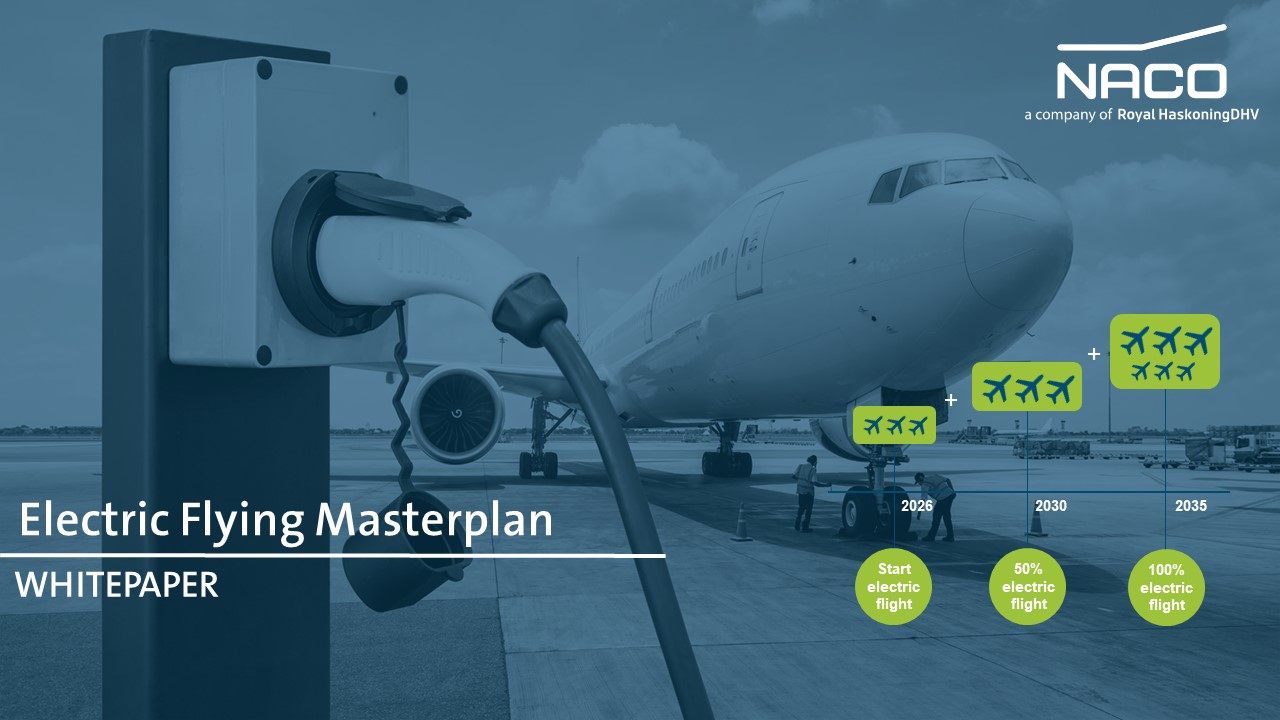How Electric Flying will change the face of aviation
17-01-2022
From contactless technology and biometrics to airport planning, asset design, and airplanes themselves – digital solutions and electric power are making their way into aviation. The change is powered not only by the need for more sustainable airport operations in the face of global Net Zero targets but the potential for cheaper travel and a better passenger experience.

Electric flying has the potential to change the face of airports and air travel in the coming decade – but there are unique challenges to be overcome. At World Aviation Festival, Tom Mockett, Director of Aviation Strategy at NACO, spoke on the future of electric flying. We caught up with him to discuss where the journey could take us in the years to come:
Why is electric flying relevant for airports?
Sustainability is a key factor. The aviation sector today is responsible for around 3% of the world’s carbon emissions. By 2050 it’s expected that aviation’s share could grow to between 20-50% - that’s a significant jump!Of today’s 3% emissions - 94% of it comes from airlines – so electric flying, SAF and Hydrogen represent a game-changing set of alternatives that airlines are keen to pursue in the coming decade and beyond.
At the same time, in the last few years, we’ve seen more stories of ‘flight shaming’ as passengers turn their backs on air travel – and at a national level, governments are responding to their sustainability and emissions targets by taking action. In France, for example, moves have already been made to ban short-haul domestic flights.
Electric flying could provide an industry-wide push for greater sustainability as numerous bodies establish Net Zero targets. Airports that are prepared will reap the benefits from future passengers and airlines alike.
How soon will electric flying be a reality?
We already have short-range fully electric flights today, used for private travel – significantly reducing the emissions. That’s exciting, and progress is quick – so by 2026, we could see planes with a capacity of 19 passengers traveling distances around 500km.In the short term, we foresee electric flying being explored and piloted in smaller markets. Island flights are a great example, where reliable passenger traffic is required over shorter distances. Whilst electric flying is a reality today, we’re not quite at the point of commercialisation.
What are the bottlenecks in commercialising electric flying?
The main barrier today, in terms of scaling up and commercialisation, is from a technology and operational perspective, where battery density and capacity are limited. The weight of an aircraft, the passenger capacity, and the range of the flights require batteries that will provide enough power while keeping a relatively small size. The high amount of energy that is required to charge the plane at high speed is also a challenge.For major airlines, this presents hurdles to commercial scalability. However, the technology is moving quickly, and if the battery capacity will increase it would allow for bigger planes going further.

What are the best electric flight destinations to date?
Airport location and the airline network are key for a feasible electric flight strategy. As I’ve mentioned, you want to find networks with a short-range (around 200km) and stable demand – like the island states – where electric flying can be introduced and implemented more easily.Beyond this, domestic flights could also be a great starting point – again offering steady and moderate demand over what are likely to be shorter distances.
What upgrades does an airport need today for electric flights?
Airports looking to prepare for electric flights will be well placed to explore three key pillars focusing on strategy, technology, and implementation – and each plays its part.The current limitations of aircraft technology, with short-range and small capacity, mean that right now electric flying is seen as a niche market – so having a strategy for implementation and usability is an important foundation. Communicating that with stakeholders will help identify relevant partners in the electric aviation ecosystem from different perspectives, goals, dependencies.
Technology and implementation follow – understanding your infrastructure, the potential requirements, and the investments needed is key. Scaling up energy provision with charging infrastructure and green energy sources are the two most challenging and crucial aspects for airports when it comes to electric flights. Taking an integrated approach will give the best foundation for airports to thrive in the future electric or hybrid-electric market.
Finally, how can we convince passengers to take electric flights?
It centres around bringing passengers along on the journey. Passengers are increasingly aware of their impact on the climate and on the impact of flying in particular – but people still want to travel the world and so there would undoubtedly be an appetite for alternative solutions.The biggest obstacle for airports and airlines is selling passengers on electric flying as an alternative solution. When things have been done one way for decades, the idea of an entirely new approach raises questions. The car industry has faced the same issue but has overcome these challenges within the last decade, pointing to how we can overcome industry bottlenecks and work collaboratively together to accelerate the pace of change. Showing passengers the benefits – whether it regards affordability, safety, and viability of electric flying will raise awareness about how electric flying could reduce the environmental impact whilst providing an excellent passenger experience.
We have developed an electric flying master plan study that will provide expert insight into the topic. Want to know more? Sign up to download the report.
White Paper
Electric Flying Masterplan | Whitepaper
- Get insights into the current status and future of electric flying
- Explore the challenges and opportunities of e-flights

Are you interested in exploring the transition to electric flying at your airport? Talk to our experts today and see what it could mean for you.
